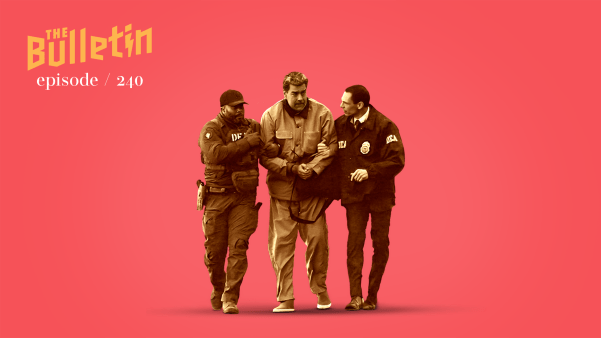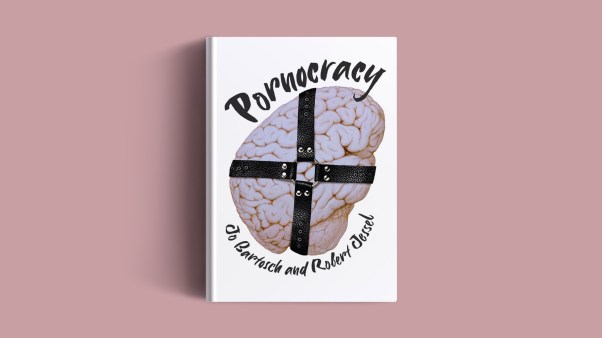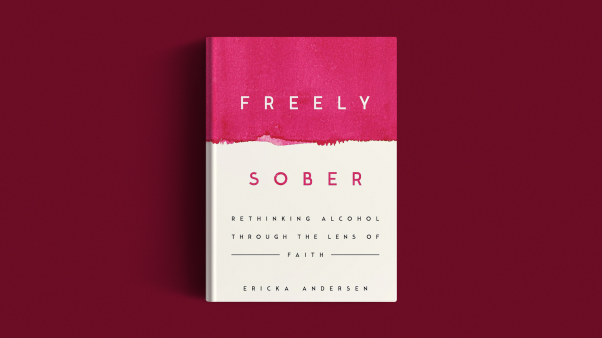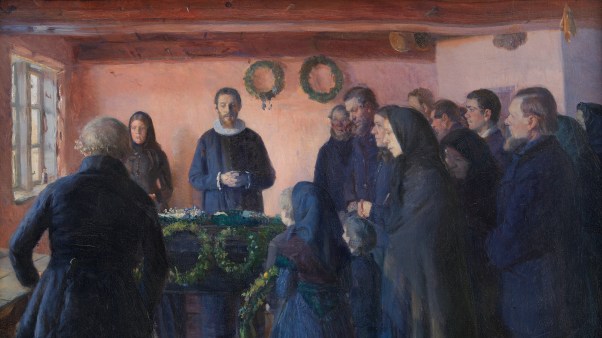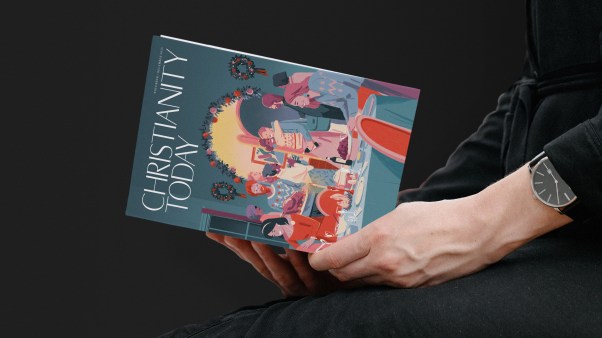In July 2017, my husband and I lost a son to miscarriage 14 weeks into my pregnancy. Earlier that year, we had experienced a miscarriage at around 6 weeks. Both miscarriages were devastating, but our second loss was different in one respect: This time we had seen a body.
My pregnancy complications required frequent sonograms, so by the time we lost our second baby, I’d seen him a dozen times. We went from watching the faintest flicker of a heartbeat to seeing arms, legs, hands, feet, and what my favorite doctor referred to as “an absolutely perfect little face.” For weeks, we prayed and waited. We watched our baby grow, twirl, and, once, even wave. Right before we lost our son, things were looking very hopeful; my body seemed to be getting better. At the 13-week sonogram appointment, my husband saw our son bouncing around and exclaimed (far too loudly for a medical office), “Oh my gosh, that’s a baby!”
Then, a week later, we found out our baby had died. I had a high risk of hemorrhage due to complications from my first miscarriage, so doctors strongly advised that I undergo a dilation and curettage, a procedure where the walls of the uterus are scraped to remove the placenta and the fetus. We met with the physician who would perform the task; hot tears filled my eyes as I stammered out the question that was nearest to my broken heart: What will happen to the body?
The doctor explained that our “discarded tissue” would go to genetic testing and pathology, where medical experts would try to pinpoint a reason for the miscarriage. I responded, “After that, what happens? Can we have the baby’s body?”
The doctor recoiled from my question with a look of confusion and faint horror. There was a long, awkward pause. My husband and I had established an easy rapport with our young doctor, making small talk about local music. Now we could see his brain recalibrating, assigning us to a new category of freaks. He replied, “I don’t know. No one has ever asked me that before.”
I wasn’t naïve. I knew our baby didn’t look identical to a newborn. I knew the “D and C” procedure would destroy the body captured in the sonogram photos that I carried in my purse. I told the doctor, “Look, I know his skin is translucent and he isn’t fully developed, but I also know he’s our baby. We already loved him.”
In Pennsylvania, where we live, miscarried babies are not issued a death certificate until they are 16 weeks in utero. Our baby was two weeks too young to have any official recognition of his death. His body was caught in a strange medical limbo—too human to be released to us but not quite human enough to be released for burial. He would end up in medical waste, a thought I could not abide.
Our doctor wasn’t a jerk or insensitive to our grief. He was professional; we liked him. But he worked in a system. In the very room where I lay, focusing on breathing while our son was slowly extracted from my body, our doctor and his colleagues regularly perform abortions. Though our doctor expressed sympathy for our loss, the hospital as a larger institution couldn’t pivot quickly from seeing our baby as a meaningless bundle of cells to seeing him as a human being. I was left, disoriented by grief, to navigate a system that didn’t quite see our lost son’s body as something to be honored.
I told my Roman Catholic friend Faith about my dilemma, and she sprang into action, calling diocesan offices and researching my options. Roman Catholics often set aside burial space for miscarried babies, but Faith found out that, in our particular diocese, this space is limited to Roman Catholic families.
In one desperate, last-ditch effort, my husband went out and bought a waterproof box, hoping the doctor would just give us the baby’s remains after the surgery so that we could at least bury them in the backyard. But of course, hospitals do not just hand out human remains. We were mired in bureaucratic uncertainty, and I was sad, sore, and still bleeding. So we gave up. I had tried and failed; one grief was added to another.
Then my bishop got word of our need and connected us to Anglicans for Life, a Pennsylvania-based pro-life group, to see if they could help. I called and left a message, assuming I would find yet another dead end. To my surprise, a woman named Georgette Forney, the organization’s president, called me back immediately. She was caring, motherly, sensitive, and also a force of nature. She was going to get me my baby’s body back if it was the last thing she did.
Forney knew which levers to pull to make the system work in our favor. She found a funeral home in town that would receive and cremate a baby’s remains, even if the baby died before 20 weeks in utero. (Cremation was not my first choice, but it sure beat medical waste and felt like a total godsend.) Finally, she made sure that our son’s body could both receive genetic testing and be released to the funeral home.
Forney also came alongside us as we grieved. During the first few weeks after the miscarriage, she spent hours on the phone with me asking questions about how I was doing, praying for me, inquiring about how my daughters were processing the loss of a sibling they had hoped and prayed for, and asking me what baby names we had been considering. She listened and listened and let me cry. She reminded me to expect grief to last a lot longer than others might think it should. (She’d add: Just ignore those people.) She also sent us books and a long list of resources, including different liturgies that have been used in services for miscarried children.
When the pro-life movement makes the news, it’s usually about marches, clinic protests, or campaigns to bolster legislative efforts to end abortion. I had no idea that some pro-life organizations also go about the quiet, unnoticed work of coming alongside mothers grieving a miscarriage. In the dark months after we lost our baby, the simple message of “your baby is a real human being and you can take all the time you need to grieve” was healing and powerful.
It was also radically pro-life.
Not all women who miscarry have an intact body or even remains to care for (I did not with my first miscarriage). But for those of us who do, the practice of burying our never-born children offers important psychological and emotional comfort to families. It also witnesses to the humanity of those we bury.
Not all pro-life organizations provide this kind of care. Forney told me, “Almost all pro-life groups acknowledge that women who have suffered miscarriage need recognition of their grief and pastoral care, but many don’t see that as their mission.”
I absolutely support efforts to advocate for legislation against abortion and provide crisis pregnancy services. But as a mom who was helped in deep grief, I’ve come to believe the movement also needs to embrace post-miscarriage care as part of its mission.
More importantly, the church also needs to embrace this as part of our mission.
A few weeks after we learned that our son had died, we gathered in our dimmed church sanctuary with a small group of friends and our pastor. We walked through a liturgy together and placed our baby’s ashes in an urn. Each member of my family also put a gift inside, along with notes we had written and drawings our kids had made for the occasion. Weeks before the miscarriage, my ever-crafty eight-year-old had made the baby a present for his “birthday,” which she placed in his urn—her token of hope that she’d meet him someday. At the end of the ceremony, our family, together with our community, placed the urn in our church’s columbarium. Now every Sunday, we as a church worship in the same room as my son’s ashes.
Grieving a miscarriage is complex for many reasons. First, though you’ve lost a child, you often never get to see a body. Even in my case, what was left of our child’s body went from the procedure room to a lab to a funeral home. The closest I got to actually holding my baby was holding his ashes. Secondly, there is often no sacred space or ritual to grieve an unborn child—no funeral, no memorial, no liturgy to help give words to pain or hope.
In response to this felt need, several months after the miscarriage, my husband and I and the rest of our church staff planned what we called “A Service of Memorial and Lament.” We invited anyone who, in the words of our church bulletin, had suffered “the loss of children in utero through a miscarriage or a regretted abortion, the loss of children through stillbirth, or the long ache of infertility.” It was a profound and beautiful service. I preached to faces strewn with tears. When I left the sanctuary later that night—long after the service was over—there were still groups of (mostly) women gathered, praying for one another, crying together, or sitting quietly.
Even non-Christian friends responded to the event with notes of encouragement; they were glad our church was holding the service. (Our church leadership is currently working on a sustainable, long-term plan to help families walk through grief related to pregnancy loss and also to provide burial space for miscarried babies.)
The gospel gives hope to women who have experienced miscarriage. Our calling as a church community is to embody this good news.
In a culture divided about the worth and dignity of unborn children, grieving a miscarriage is particularly fraught. The church can come alongside women (and men) in these difficult moments and say to them, “Your grief is real. God sees it. We see it. And we grieve with you.” It’s a profoundly pastoral act. It’s also a political one.
We have come to see politics too much in terms of legislation and policy. And while a Christian political vision is not less than that, it is always more. The church, Stanley Hauerwas reminds us, is a polis; we are an alternative political community, not primarily because of how we vote but because of how we live together as a people. Our church did not hold our Liturgy of Memorial and Lament (or set aside space for burial of miscarried children) in order to change anyone’s vote. But it is nevertheless a political act to gather together to recognize and honor life, to grieve death, and to wait for redemption, even for resurrection.
Hauerwas argues that the Christian political response to abortion is not simply reflected in our legal or legislative efforts; we also need to be a church that welcomes children, that takes our baptismal vows seriously enough that we become a new family, and that radically cares for and supports mothers in difficult or dire circumstances. Part of our political witness, too, is to care for families who have lost unborn children, to practice together liturgies of mourning for those who were never born, and if possible, to help us bury our dead.
Tish Harrison Warren is a priest in the Anglican Church in North America, writer-in-residence at Church of the Ascension Pittsburgh, and the author of Liturgy of the Ordinary.
Have something to say about this topic? Let us know here.



